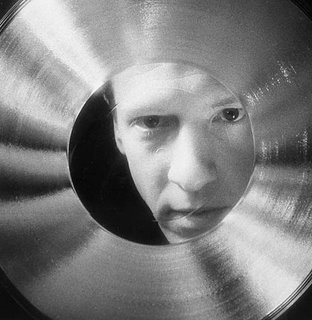Week 9
- Practical 1 - Audio Arts - Reverb [1]
- kick
- snare
- load vocal
- backing vocal
- keyboards
There can be a plethora of different parameters on a given reverb (as demonstrated on the Dp/4 in studio 1), but from this picture you can see the D-Verb parameters:

A good article on how to use this crappy plugin can be found here. The article does make a good point by mentioning the fact that it can be used effectively for the less important parts of the mix to save on processing power.
- Practical 2 - Creative Computing - Supercollider (6) [3]
// Week 9
// SynthDef Instrument
(
SynthDef ("FM",
{
// Arguments
arg mp1 = 60,
mp2 = 67,
dur = 4, // duration of Volume Envelope
amp = 0.2,
pan = 0 // Couldn't get working with Pbind
;
// Variables
var fm
;
// UGens
fm = SinOsc.ar(
freq: ([mp1.midicps,mp2.midicps]) + // Carrier Frequency
VarSaw.ar(
freq: LFTri.kr( // Control Frequency
VarSaw.kr( // Control Frequency
20, 100),
100),
mul: LFPulse.kr( // Index
200, 1)
),
// Overall Amplitude
mul: amp
);
// Envelope
fm = fm * EnvGen.kr(
Env.perc(0, dur),
doneAction: 2
)
;
// Out
OffsetOut.ar(0,Pan2.ar(fm, pan));
}
).load(s);
SynthDescLib.global.read
)
// Pbind Sequencer
(
var explosion;
explosion = [0, 23, 3, 5, 41, 20, 16];
Pbind(
\instrument, "FM",
\mp1, Pseq([70, 66, 65, 63, 65, 66, 65, 63, 61,
63, 61, 60, 58, 57, 60, 63, 66, 65, 58, 61], inf),
\dur, Pseq([2, 2, 1, 1, 1, 1, 1, 1, 1, 0.5,
0.5, 2, 2, 1, 1, 1, 1, 1, 1] * 0.2, inf)
).play;
Pbind(
\instrument, "FM",
\mp1, Pseq([70, 66, 65, 63, 65, 66, 65, 63, 61,
63, 61, 60, 58, 57, 60, 63, 66, 65, 58, 61] * 1.015, inf),
\dur, Pseq([2, 2, 1, 1, 1, 1, 1, 1, 1, rrand(0.45, 0.6),
0.5, 2, 2, 1, 1, 1, 1, 1, 1] * 0.2, inf)
).play;
Pbind(
\instrument, "FM",
\mp1, Pseq([70, 66, 65, 63, 65, 66, 65, 63, 61,
63, 61, 60, 58, 57, 60, 63, 66, 65, 58, 61] * 1.030, inf),
\dur, Pseq([2, 2, 1, 1, 1, 1, 1, 1, 1, rrand(0.35, 0.6),
0.5, 2, 2, 1, 1, 1, 1, 1, 1] * 0.2, inf)
).play;
Pbind(
\instrument, "FM",
\mp1, Pseq(explosion +60 , inf),
\dur, 0.2,
\amp, 0.03
).play;
Pbind(
\instrument, "FM",
\mp1, Pseq(explosion +60 , inf),
\dur, 1.9,
\amp, 0.03
).play;
Pbind(
\instrument, "FM",
\mp1, Pseq(explosion +60 , inf),
\dur, 1.8,
\amp, 0.03
).play;
Pbind(
\instrument, "FM",
\mp2, Pseq(explosion +60 , inf),
\dur, 4,
\amp, 0.08
).play;
Pbind(
\instrument, "FM",
\mp2, Pseq(explosion +60 , inf),
\dur, 4.01,
\amp, 0.08
).play;
)
Result from above code
I attempted to incorporate a panning mechanism into the SynthDef (based on the SimpleTone instrument), but I couldn’t get it going when I tried to use it with the Pbind’s. In this case it’s just unused code, but I think I’ll leave it there in case I work out how impliment the panning later on.
I also attempted to incorporate these two messages:
(mp1.midicps+mp2.midicps)
And
([mp1.midicps, mp2.midicps])
as an arguments (to replace the “freq” of the SineOsc in the SynthDef) that I could control with Pbind, but alas I couldn’t work this out.
This is what the patch sounds like when I tried to incorporate these messages as an argument
Kinda cool, but completely unintentional.
This is what it sounds like with “(mp1.midicps+mp2.midicps)” instead of the original “freq”.
- Music Technology Forum - Presentation - Presentations by Seb Tomczak and Darren Curtis
Darren Curtis also talked about his honours thesis that relates to the area of sound healing, which involves sound that has a direct impact on the physiological processes of the body. He mentioned three popular sound healing techniques:
- Binaural Beats
- Filtering
- Gating (sonic stimulation)
He also mentioned three different Biotechnologies:
- Ultrasound
- Vibroacoustics
- Biocomputer Waves
Darren has decide to use the technology of Binaural Beats as his focus for his thesis. Originally he planned to work with people from the psychology department and make use of their EEG machines, but unfortunately he doesn't think this is possible given the scope and timeframe. He said that perhaps in future study as a masters or PHD student, he'll be able to incorporate this sort of technology. I also find this subject very interesting. At a presentation Darren Curtis late last year, I got the pleasure of listening to his sacred sound CD. I must get a copy sometime.[5]
- Music Technology Forum - Workshop - Workshop on Christian Marclay, and Pink Floyd [6]
 This week we listened to Christian Marclay, the vinyl scratcher. The four pieces we listened to, “John Cage”, “Mariah Caller”, “Jimi Hendrix”, and “Johann Strauss”, were compilations of these composer’s works, but scratched up. I guess my favourites out of these four were “John Cage”, because of the interesting rhythms, and “Johann Strauss”. “Johann Strauss” reminded me of someone playing a monophonic synth with the slide feature enabled. I actually found this piece quite humorous because it sounded as though an orchestra was completely butchering this piece. On a more serious note this piece could also be thought of as an interpretation of this classical piece of music, must like a classical musician interprets notation.
This week we listened to Christian Marclay, the vinyl scratcher. The four pieces we listened to, “John Cage”, “Mariah Caller”, “Jimi Hendrix”, and “Johann Strauss”, were compilations of these composer’s works, but scratched up. I guess my favourites out of these four were “John Cage”, because of the interesting rhythms, and “Johann Strauss”. “Johann Strauss” reminded me of someone playing a monophonic synth with the slide feature enabled. I actually found this piece quite humorous because it sounded as though an orchestra was completely butchering this piece. On a more serious note this piece could also be thought of as an interpretation of this classical piece of music, must like a classical musician interprets notation.
We revisited Pink Floyd again this week. This time we listened to “Shine On You Crazy Diamond”, from Wish You Were Here. I personally hadn’t heard a lot of Pink Floyd outside of “The Dark Side of the Moon”, so this was an interesting introduction to some of their later work. Only two years after Dark Side of the Moon, but I noticed quite change in their style.
- References
- [1] Grice, David. 2006. Practical on Live Recording. University of Adelaide, 9 May.
- [2] Sound on Sound. "Making The Most Of D-Verb". From Sound On Sound. November 2003. http://www.soundonsound.com/sos/nov03/articles/protoolsnotes.htm . Accessed on 15/05/06.
- [3] Haines, Christian. 2006. Lecture on Supercollider . University of Adelaide, 11 May.
- [4] Seb Tomczak. 2006. Presentation on Seb Tomczak's honours thesis. University of Adelaide, 11 May.
- [5] Darren Curtis. 2006. Presentation on Darren Curtis's honours thesis. University of Adelaide, 11 May.
- [6] Harris, David. 2006. Workshop on Christian Marclay, and Pink Floyd. University of Adelaide, 11 May.


0 Comments:
Post a Comment
<< Home